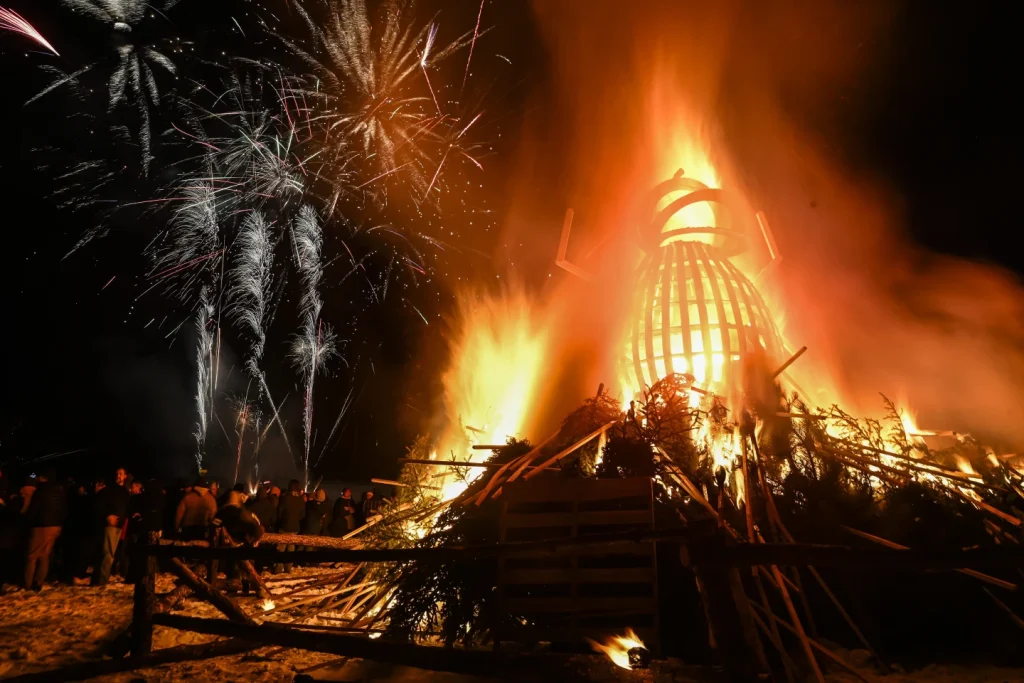The annual Burning Beetle festival in Custer, South Dakota has become a significant event in raising awareness of the destructive impact of the mountain pine beetle on forest land in the Black Hills.
This tradition, which involves hundreds of people carrying torches and setting fire to a giant wooden beetle effigy, serves as a powerful symbol of the ongoing battle against the infestation of these destructive insects.
The mountain pine beetle, also known as Dendroctonus ponderosae, has been a major concern for forest land in the Black Hills region.
These tiny beetles have caused widespread devastation, leading to the loss of millions of pine trees. The impact of this infestation extends beyond the environmental realm, as it also affects the local economy and the livelihoods of those who depend on the forest for their well-being.
The Burning Beetle festival serves as a means of drawing attention to this pressing issue. By bringing together members of the community to participate in this symbolic act, the festival aims to raise awareness and foster a sense of unity in addressing the challenges posed by the mountain pine beetle infestation.
The sight of hundreds of torches being carried in a march to the pyre, where the wooden beetle effigy is set ablaze, is a powerful visual representation of the community’s collective efforts to combat this threat.
The involvement of the Custer firefighters in preparing and lighting the torches further underscores the significance of this event.
Their participation not only highlights the importance of fire safety in the controlled burning of the effigy but also showcases the collaboration between the community and the local authorities in addressing environmental concerns.
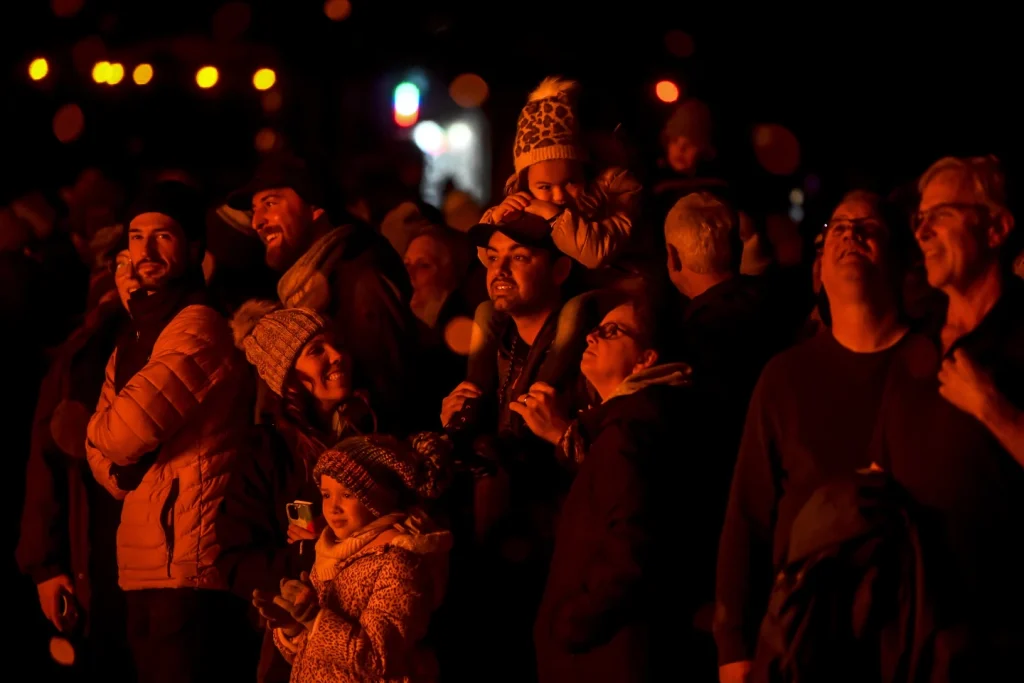
The 11th Burning Beetle festival, as reported by the Rapid City Journal, is a testament to the enduring commitment of the community in confronting the challenges posed by the mountain pine beetle infestation.
The fact that this tradition has continued for over a decade speaks to the resilience and determination of the people in Custer and the surrounding areas.
It is a demonstration of their unwavering dedication to preserving the natural beauty and ecological integrity of the Black Hills region.
In addition to its symbolic significance, the Burning Beetle festival also serves as a platform for education and outreach.
Through various activities and events associated with the festival, participants have the opportunity to learn more about the mountain pine beetle infestation and its impact on the environment.
By fostering a greater understanding of the issue, the festival contributes to the empowerment of the community in taking proactive measures to address the challenges posed by the infestation.
As the Burning Beetle festival continues to garner attention and support, it is hoped that its impact will extend beyond the local community.
By drawing national and even international interest, this annual event has the potential to raise awareness on a larger scale and inspire similar initiatives in other regions affected by the mountain pine beetle infestation.
In conclusion, the Burning Beetle festival in Custer, South Dakota stands as a testament to the power of community mobilization and collective action in addressing environmental challenges.
Through its symbolic significance, educational value, and potential for broader impact, this annual tradition serves as a shining example of the proactive measures being taken to combat the destructive impact of the mountain pine beetle on forest land in the Black Hills.
It is a reminder of the resilience and determination of the human spirit in the face of adversity, and a beacon of hope for the preservation of our natural environment.
The act of setting a tall beetle effigy on fire amidst drum beats and chants of “Burn, beetle, burn” is a spectacle that captivates the senses and ignites the spirit of those in attendance.
This ritualistic event, accompanied by the dazzling display of fireworks, is a celebration of art, culture, and community.
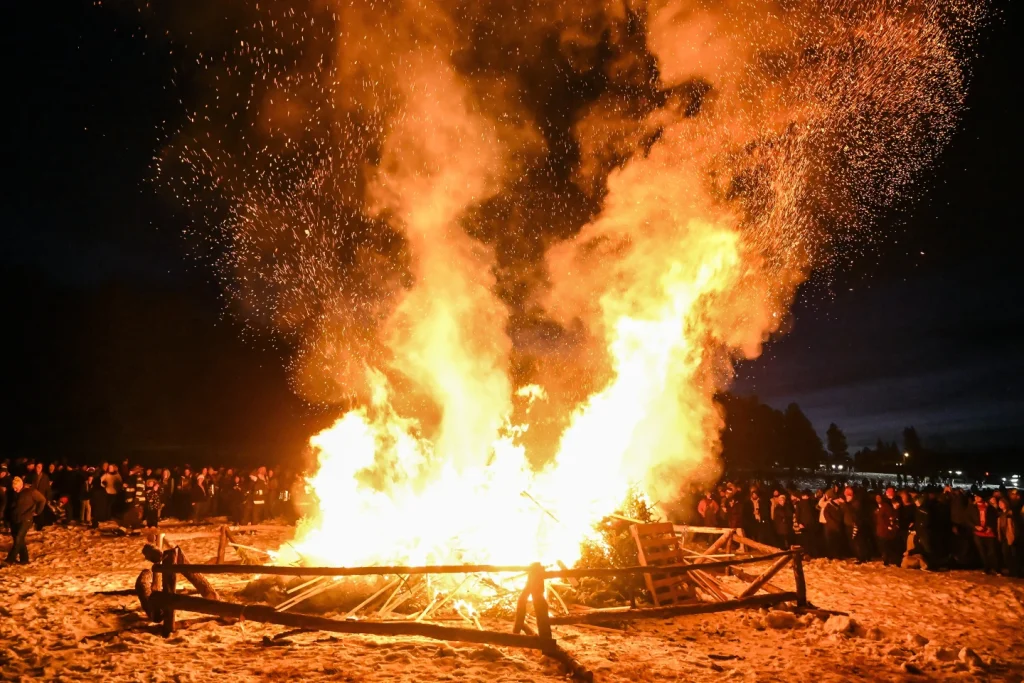
However, it is important to recognize the potential risks associated with such a fiery display and to ensure that safety measures are in place to prevent any unintended consequences.
The burning of the beetle effigy is a symbolic act that holds deep cultural significance for the community. It represents the release of negative energy, the cleansing of the spirit, and the renewal of hope for the future.
The rhythmic drum beats and fervent chants create an atmosphere of unity and solidarity, as participants come together to partake in this ancient tradition.
The talent show and “bug crawl” that accompany the burning of the beetle effigy serve as a platform for local artists to showcase their skills and talents, further enriching the cultural tapestry of the community.
While the spectacle of the burning beetle effigy is undoubtedly awe-inspiring, it is essential to acknowledge the potential dangers associated with such a fiery display.
Firefighters play a crucial role in ensuring the safety of the event, standing watch to prevent any mishaps and warning participants against reckless behavior.
The act of throwing torches or launching burning sticks into pine trees piled at the base of the beetle poses a significant fire hazard, and it is imperative that participants adhere to the guidance of the firefighters to prevent any untoward incidents.
In light of the potential risks, it is incumbent upon the organizers of the event to prioritize safety measures and to educate participants about the importance of exercising caution.
Clear guidelines should be established to regulate the use of fire and to prevent any unauthorized actions that could compromise the safety of the event.
Additionally, the presence of trained medical personnel and emergency response teams should be ensured to address any unforeseen emergencies that may arise during the course of the event.
The burning of the beetle effigy is a time-honored tradition that holds deep cultural significance for the community, and it is imperative that this tradition be upheld in a manner that prioritizes the safety and well-being of all participants.
By implementing stringent safety measures and fostering a culture of responsible behavior, the organizers can ensure that the event continues to be a source of joy and inspiration for the community, while mitigating any potential risks associated with the fiery spectacle.
In conclusion, the burning of the beetle effigy is a vibrant and symbolic celebration of art, culture, and community.
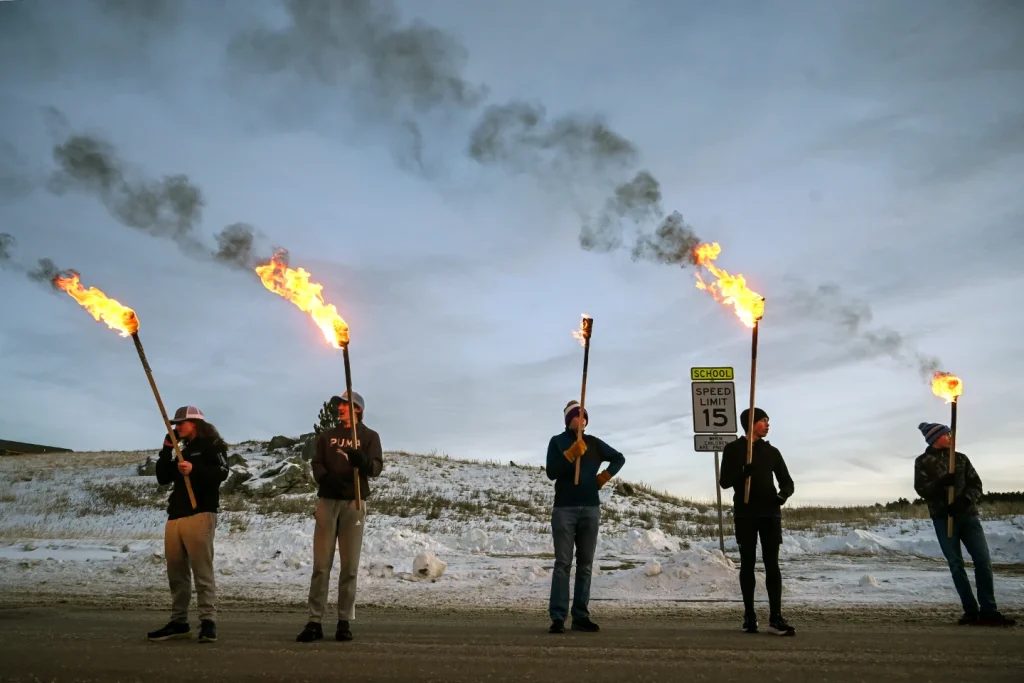
While the event is characterized by its fervent energy and dazzling display of fireworks, it is crucial to recognize the potential risks associated with such a fiery display and to prioritize safety measures to prevent any unintended consequences.
By fostering a culture of responsible behavior and implementing stringent safety protocols, the organizers can ensure that the event continues to be a source of joy and inspiration for the community, while safeguarding the well-being of all participants.
The mountain pine beetle, known for its aggressive, persistent, and destructive nature, has long been a concern for the U.S. Forest Service in the western United States and Canada.
The impact of these outbreaks has been particularly felt in the Black Hills region, which has experienced multiple infestations dating back to the 1890s.
The most recent outbreak, spanning from 1996 to 2016, left a significant mark on the area, affecting a staggering 703 square miles (1820 square kilometers), as reported by the South Dakota Department of Agriculture and Natural Resources.
The threat posed by the mountain pine beetle cannot be understated. As a primary agent of pine tree mortality, this bark beetle has the potential to devastate vast expanses of forested land, leading to ecological, economic, and social repercussions.
The scale of its impact on the Black Hills region serves as a stark reminder of the urgent need for proactive measures to mitigate the spread and impact of this destructive pest.
From an ecological standpoint, the mountain pine beetle poses a serious threat to the delicate balance of forest ecosystems.
By targeting and infesting mature pine trees, the beetle disrupts the natural succession of plant communities, leading to shifts in species composition and overall biodiversity.
Furthermore, the loss of large swaths of pine trees can have cascading effects on soil stability, water quality, and wildlife habitat, further exacerbating the ecological impact of these outbreaks.
The economic implications of mountain pine beetle infestations are equally concerning. The timber industry, which plays a significant role in the regional economy, faces substantial losses as a result of widespread tree mortality.
The cost of salvage operations, reforestation efforts, and infrastructure protection adds further strain to already vulnerable rural economies.
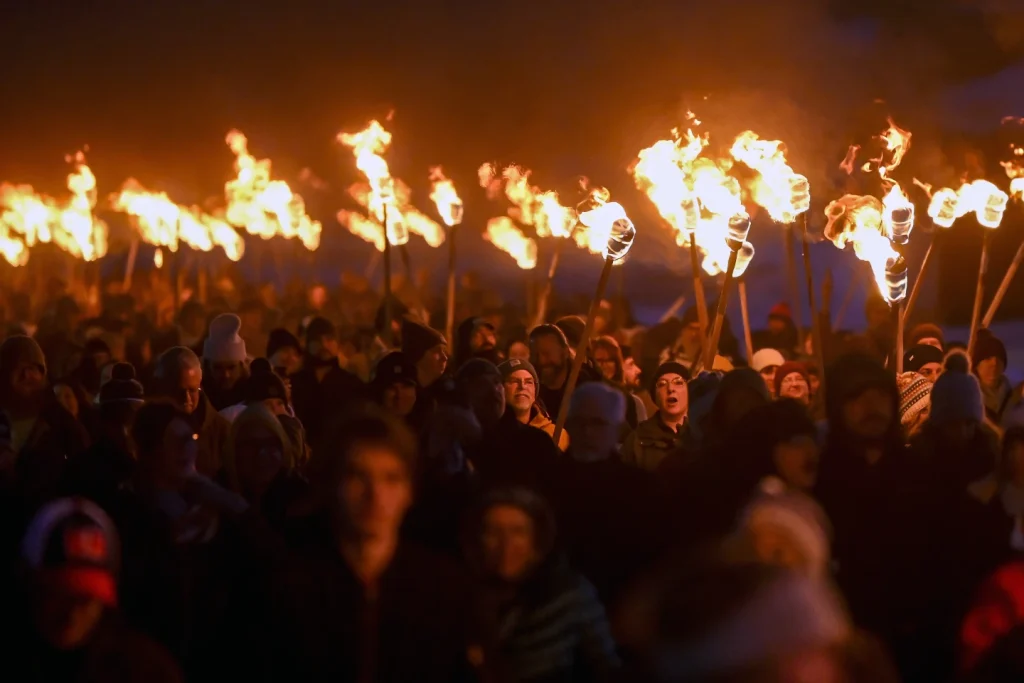
Moreover, the decline in forest health can impact recreational activities such as hiking, camping, and wildlife viewing, which are vital sources of revenue for local communities.
Socially, the presence of dead and dying trees in once-thriving forests can have a profound impact on the visual landscape and cultural identity of the affected regions.
For many residents and visitors, the loss of iconic pine forests can evoke a sense of loss and nostalgia, further underscoring the far-reaching consequences of the mountain pine beetle infestations.
In response to these challenges, concerted efforts are underway to address the mountain pine beetle threat in the Black Hills and beyond.
Integrated pest management strategies, including monitoring, early detection, and targeted treatment of infested trees, are being implemented to limit the spread of the beetle and minimize its impact.
Research into natural predators, pheromone-based repellents, and other innovative control methods offers hope for more sustainable and effective management approaches.
Furthermore, public awareness and education campaigns are essential for fostering a deeper understanding of the ecological dynamics at play and garnering support for proactive measures.
Engaging stakeholders, including landowners, conservation organizations, and government agencies, in collaborative conservation initiatives can help build resilience in forested landscapes and promote long-term sustainability.
In conclusion, the mountain pine beetle represents a formidable challenge for the Black Hills and other regions affected by its relentless spread.
The magnitude of its impact on forest ecosystems, economies, and communities underscores the urgent need for comprehensive and coordinated responses.
By embracing innovative management strategies, fostering public engagement, and prioritizing the preservation of forest health, we can work towards mitigating the threat posed by the mountain pine beetle and safeguarding the ecological and cultural heritage of our forests for generations to come.
In addressing the complex interplay of ecological, economic, and social factors, we can strive towards a future where the mountain pine beetle is no longer synonymous with devastation, but rather a catalyst for resilience and sustainable forest management.
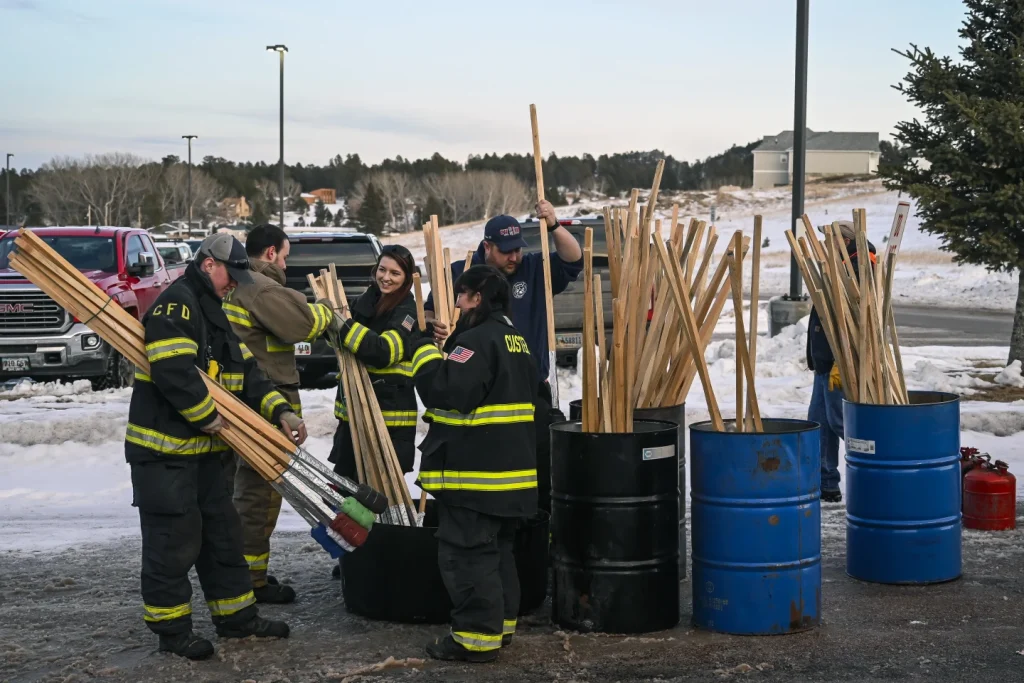
As we navigate the intricate challenges posed by the mountain pine beetle, it is imperative that we approach this issue with a sense of urgency, collaboration, and innovation.
By doing so, we can work towards a future where the ecological and cultural richness of our forests remains intact, and where the mountain pine beetle is no longer a dominant force of destruction, but rather a catalyst for resilience and sustainable forest management.
